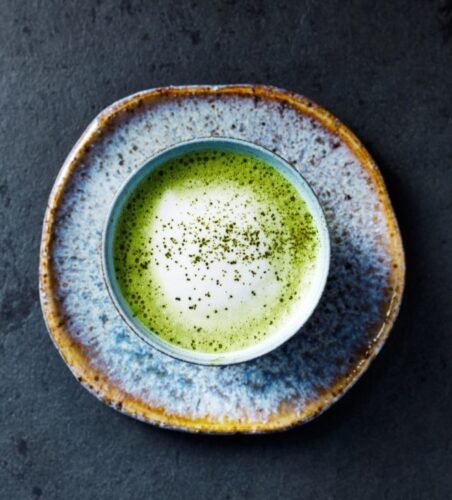
Latte art, a technique traditionally associated with coffee, originated in Italy and has since gained global popularity. While matcha lattes are still emerging in the world of latte art, they provide an exciting opportunity to enhance the visual appeal of green tea beverages. Adding intricate patterns to a matcha latte not only beautifies the drink but also elevates the overall experience for the drinker.
The beauty of latte art lies in the quality of the milk foam. Microfoam—finely whipped, smooth foam—is essential for creating clean, precise designs. A well-executed latte art design reflects the skill and attention to detail of the maker, leaving a lasting impression on those who enjoy it.

There are three main techniques for creating latte art:
1. Freehand Pouring
In this method, the milk foam is poured onto the green tea in a controlled manner while the cup is gently moved. By adjusting the direction and weight of the milk foam, a variety of designs can be created, from simple hearts and leaves to more complex shapes like swans or fish. The amount of foam poured and the tilt of the cup determine the structure of the pattern—larger foam portions are needed for round shapes like hearts, while thinner foam is ideal for sharper designs like leaves.
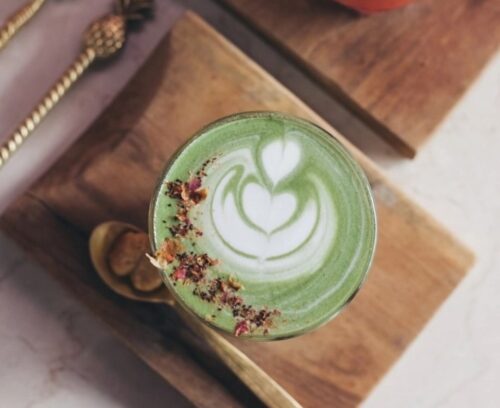
2. Dragging Technique
The dragging method involves pouring milk foam into a cup filled with green tea, allowing the foam to reach the edge of the cup. Decorative sauces, such as chocolate or caramel, are then added in various geometric patterns. Using a sharp object, the design is dragged through the foam to create detailed patterns, including flowers like chrysanthemums, roses, or star-shaped designs. This technique adds depth and visual interest to the latte art.
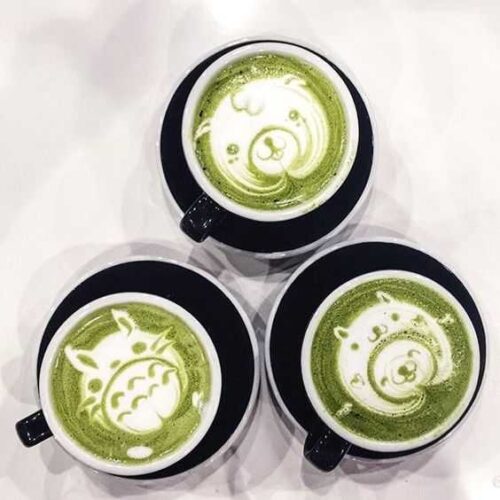
3. Combination of Freehand Pour and Dragging
This method combines the freehand pour and dragging techniques to create more intricate designs, such as animals or cartoon characters. First, milk foam is poured to form a large circle in the center of the cup, leaving a border of green tea. A spoon is then used to place small amounts of foam to form the outline of the shape (e.g., ears, horns). Details such as eyes, whiskers, and other features are drawn with a stick dipped in green tea, adding character and personality to the design.
Achieving beautiful latte art requires speed and precision. As the green tea and milk foam must be prepared simultaneously, it is important to act quickly to ensure the foam retains its shape. Additionally, the color of the matcha itself can influence the final design, and the pouring technique should be continuous, without interruption, to maintain the integrity of the pattern.
When steaming the milk, aim for a smooth, velvety texture. Steaming should be done at a temperature of 60–70°C to achieve a rich, stable foam. High-fat, high-protein cow’s milk is ideal for creating the perfect foam, though plant-based milk options can also be used depending on preference.
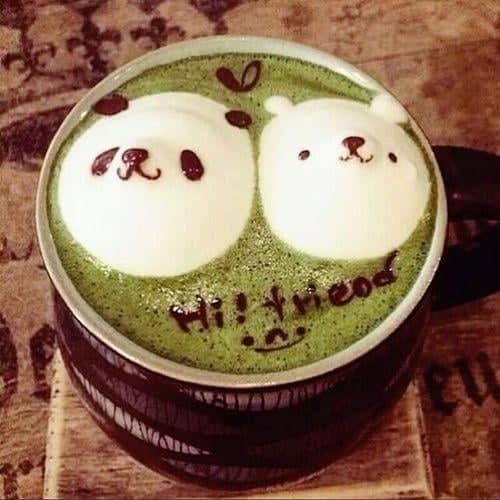
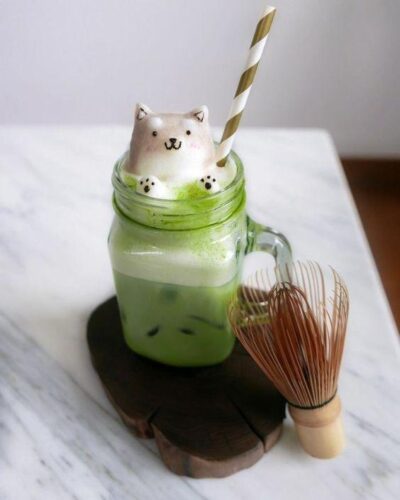
Beyond traditional latte art, some cafes are now experimenting with 3D latte art. This involves creating foam shapes that rise above the rim of the cup, adding a playful and creative element to the beverage. While there is no fixed pattern for 3D latte art, the key is to craft stable, smooth foam that can be molded into various imaginative shapes.
For cafes that are still mastering latte art, a simple yet effective alternative is to lightly sprinkle matcha powder on top of the milk foam. This adds dimension and visual appeal, enhancing the matcha latte without the need for intricate designs.
Matcha latte art is an art form that requires practice, creativity, and attention to detail, but it can be a rewarding and impressive way to present green tea in a new light.
